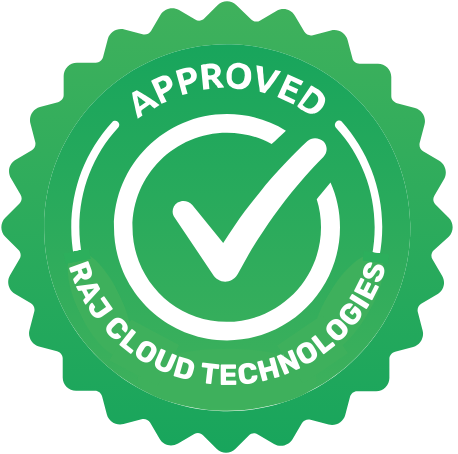IAM (Identity and Access management)
- Fundamental concepts of Identity and Access Management (IAM)
- Overview of organizations, roles, members, service accounts, and policies
- Understanding Google Cloud’s resource hierarchy
- Exploring different IAM roles and permissions
- Best practices for IAM implementation
- Assigning roles and conducting hands-on testing (Lab)
- Creating service accounts and assigning roles (Lab)
- Practice questions for review
Compute Engine
- Introduction to Virtual Machines (VMs)
- Lifecycle of VM instances
- Various access options for VMs
- Creating Linux and Windows VM instances (Hands-on Lab)
- Different machine types and configurations
- Spot (Preemptible) instances and sole-tenant VMs
- Understanding VM images
- Overview of machine images
- Live migration and automatic restart of VMs
- Types of storage: Local SSD, persistent disk, and balanced persistent disk
- Deleting a VM and recreating it using a disk (Hands-on Lab)
- Understanding and managing snapshots
- Configuring firewall rules
- Pricing structure and available discounts
- Creating snapshots and setting up snapshot schedules (Hands-on Lab)
- Recovering VMs using snapshots (Hands-on Lab)
- Performing Compute Engine tasks in Cloud Shell (Hands-on Lab)
- Practice questions for review
Storage: Google cloud Storage (GCS)
- Introduction to Object Storage (Google Cloud Storage – GCS)
- Key features and use cases of GCS
- Understanding the structure of GCS
- Bucket naming conventions and best practices
- Creating a storage bucket and uploading objects (Hands-on Lab)
- Configuring IAM roles and ACL permissions for buckets (Hands-on Lab)
- Exploring different storage classes in GCS
- Implementing object versioning
- Managing lifecycle policies for storage optimization
- Understanding GCS pricing model
- Hands-on practice with versioning and lifecycle policies (Lab)
- Using GCS via gcloud commands (Hands-on Lab)
- Practice questions for review
Load Balancing and Autoscaling
- Introduction to GCP Load Balancing and Its Features
- Various Types of Load Balancers in Google Cloud
- Differences Between Global and Regional Load Balancers
- Understanding Internal and External Load Balancers
- Overview of Internal and External HTTPS Load Balancing
- Key Components of a Load Balancer
- Auto Scaling: Concepts and Benefits
- Managed vs. Unmanaged Instance Groups
- Hands-on Lab: Setting Up an External HTTP Global Load Balancer with Auto Scaling
VPC (Virtual private cloud)
- Introduction to Virtual Private Cloud (VPC) and Its Features
- Types of VPC: Default, Auto Mode, and Custom VPC
- Key Components of a VPC
- Understanding Internal and External IPs
- Routing in VPC: How Routes Work
- Firewall Rules and Their Configurations
- Overview of Shared VPC and Its Benefits
- VPC Peering: Concepts and Use Cases
- NAT Gateway: Functionality and Configuration
- VPC Pricing Structure and Cost Considerations
Project 1 – VPC and Compute Engine
- Creating an Auto Mode VPC
- Setting Up a Custom VPC
- Configuring and Managing Subnets
- Deploying VM Instances Across Different Subnets
- Implementing Firewall Rules for Security
- Establishing VPC Peering for Network Connectivity
- Setting Up a NAT Gateway for Internet Access
- Practice Questions for Hands-on Learning
Cloud SQL
- Introduction to Relational and Non-Relational Databases
- Types of Cloud SQL Databases
- Cloud MySQL: Features and Use Cases
- Cloud PostgreSQL: Overview and Benefits
- SQL Server in the Cloud
- High Availability (HA) in SQL Databases
- Creating a Cloud SQL Instance (Hands-on Lab)
- Setting Up a High-Availability (HA) SQL Instance (Hands-on Lab)
- Understanding Replication in Cloud SQL
- Backup Strategies and Best Practices
Cloud spanner
- Introduction to Cloud Spanner
- Comparison with Traditional Databases
- Key Features and Benefits
- Architecture: Regional vs. Global
- Understanding Replication in Cloud Spanner
- Backup and Restore Strategies
Bigdata and other database/storage services
Cloud Fire store / Datastore
- Understanding the Fire store Data Model
- Data Structure: Documents and Collections
Dataproc
- Overview and Key Features
- Use Cases and Benefits
- Notable Customers and Applications
Bigtable
- Challenges in Traditional Data Handling
- Overview and Features of Bigtable
- Use Cases and Real-World Applications
BigQuery
- Introduction to Data Warehousing
- Key Features and Benefits
- Pricing Considerations
Dataflow
- Introduction to Data Streaming
- Architecture and Working of Dataflow
- Key Features
FOR FULL SYLLABUS CLICK ON THE BUTTON BELOW TO DOWNLOAD IT



